- Clone
- 3C7 (See other available formats)
- Regulatory Status
- RUO
- Other Names
- IL-2Rα, Ly-43, p55, Tac
- Isotype
- Rat IgG2b, κ
- Ave. Rating
- Submit a Review
- Product Citations
- publications
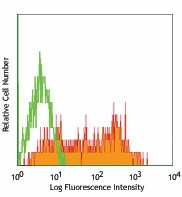
-

ConA-stimulated BALB/c splenocytes (Day 3) stained with 3C7 FITC
| Cat # | Size | Price | Quantity Check Availability | Save | ||
|---|---|---|---|---|---|---|
| 101907 | 50 µg | 57€ | ||||
| 101908 | 500 µg | 203€ | ||||
CD25 is a 55 kD glycoprotein, also known as the low affinity IL-2Rα, Ly-43, p55, or Tac. It is expressed on activated T and B cells, thymocyte subset, pre-B cells, and T regulatory cells. In association with CD122 (IL-2Rβ) and CD132(common γ chain), CD25 forms the high affinity signaling IL-2 receptor.
Product DetailsProduct Details
- Verified Reactivity
- mouse
- Antibody Type
- Monoclonal
- Host Species
- Rat
- Immunogen
- IL-2-dependent BALB/c mouse helper T-cell clone HT-2
- Formulation
- Phosphate-buffered solution, pH 7.2, containing 0.09% sodium azide.
- Preparation
- The antibody was purified by affinity chromatography, and conjugated with FITC under optimal conditions.
- Concentration
- 0.5 mg/ml
- Storage & Handling
- The antibody solution should be stored undiluted between 2°C and 8°C, and protected from prolonged exposure to light. Do not freeze.
- Application
-
FC - Quality tested
- Recommended Usage
-
Each lot of this antibody is quality control tested by immunofluorescent staining with flow cytometric analysis. For flow cytometric staining, the suggested use of this reagent is ≤1.0 µg per million cells in 100 µl volume. It is recommended that the reagent be titrated for optimal performance for each application.
- Excitation Laser
-
Blue Laser (488 nm)
- Application Notes
-
Additional reported applications (for the relevant formats) include: in vitro blocking of IL-2 binding to low- and high-affinity receptors1,2, and immunohistochemical staining of acetone-fixed frozen sections. 3C7 antibody recognizes different epitope of PC61 antibody (Cat. No. 102002). The Ultra-LEAF™Purified antibody (Endotoxin < 0.01 EU/µg, Azide-Free, 0.2 µm filtered) is recommended for functional assays (Cat. No. 101925 and 101926).
- Application References
-
- Ortega RG, et al. 1984. J. Immunol. 133:1970. (Block)
- Moreau JL, et al. 1987. Eur. J. Immunol. 17:929. (Block)
- Product Citations
-
- RRID
-
AB_961210 (BioLegend Cat. No. 101907)
AB_961210 (BioLegend Cat. No. 101908)
Antigen Details
- Structure
- Forms high affinity IL-2R with IL-2Rβ (CD122) and IL-2Rγ (CD132), 55 kD
- Distribution
-
Activated T cells and B cells, thymocyte subset, pre-B cells, T regulatory cells
- Function
- IL-2 receptor, signal transduction
- Ligand/Receptor
- IL-2
- Cell Type
- B cells, T cells, Tregs
- Biology Area
- Immunology
- Molecular Family
- CD Molecules, Cytokine/Chemokine Receptors
- Antigen References
-
1. Taniguchi T, et al. 1993. Cell 73:5.
2. Waldmann TA. 1991. J. Biol. Chem. 266:2681.
3. Read S, et al. 2000. J. Exp. Med. 192:295.
4. Lowenthal JW, et al. 1985. J. Immunol. 135:3988. - Gene ID
- 16184 View all products for this Gene ID
- UniProt
- View information about CD25 on UniProt.org
Other Formats
View All CD25 Reagents Request Custom Conjugation| Description | Clone | Applications |
|---|---|---|
| PE anti-mouse CD25 | 3C7 | FC |
| Purified anti-mouse CD25 | 3C7 | FC,CyTOF®,IHC-F,Block |
| FITC anti-mouse CD25 | 3C7 | FC |
| APC anti-mouse CD25 | 3C7 | FC |
| PerCP/Cyanine5.5 anti-mouse CD25 | 3C7 | FC |
| Purified anti-mouse CD25 (Maxpar® Ready) | 3C7 | FC,CyTOF® |
| PE/Cyanine7 anti-mouse CD25 | 3C7 | FC |
| APC/Cyanine7 anti-mouse CD25 | 3C7 | FC |
| PE/Dazzle™ 594 anti-mouse CD25 | 3C7 | FC |
| APC/Fire™ 750 anti-mouse CD25 | 3C7 | FC |
| Brilliant Violet 421™ anti-mouse CD25 | 3C7 | FC |
| Ultra-LEAF™ Purified anti-mouse CD25 | 3C7 | FC,CyTOF®,IHC-F,Block |
Customers Also Purchased
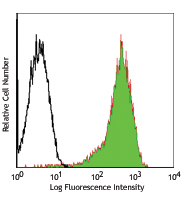

Compare Data Across All Formats
This data display is provided for general comparisons between formats.
Your actual data may vary due to variations in samples, target cells, instruments and their settings, staining conditions, and other factors.
If you need assistance with selecting the best format contact our expert technical support team.
-
PE anti-mouse CD25
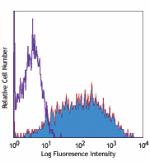
Con A-activated (3days) C57BL/6 mouse splenocytes stained wi... -
Purified anti-mouse CD25

Con A-activated (3days) C57BL/6 mouse splenocytes stained wi... -
FITC anti-mouse CD25
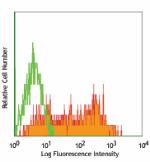
ConA-stimulated BALB/c splenocytes (Day 3) stained with 3C7... -
APC anti-mouse CD25
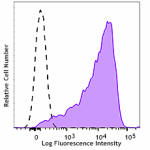
ConA/IL-2 stimulated (3 days) C57BL/6 splenocytes were stain... -
PerCP/Cyanine5.5 anti-mouse CD25
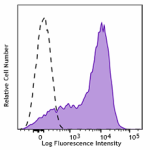
ConA + IL-2 stimulated (3 days) C57BL/6 splenocytes stained ... -
Purified anti-mouse CD25 (Maxpar® Ready)
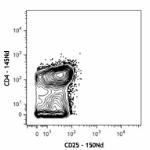
C57BL/6 mouse splenocytes stained with145Nd-anti-CD4 (RM4-5)... -
PE/Cyanine7 anti-mouse CD25
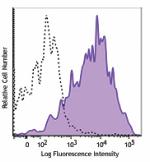
ConA/IL-2 stimulated (3 days) C57BL/6 splenocytes were stain... -
APC/Cyanine7 anti-mouse CD25
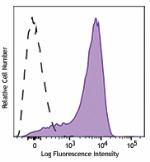
ConA/IL-2 stimulated (3 days) C57BL/6 splenocytes were stain... -
PE/Dazzle™ 594 anti-mouse CD25
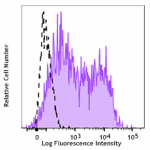
ConA-stimulated BALB/c splenocytes (Day 3) stained with CD25... -
APC/Fire™ 750 anti-mouse CD25
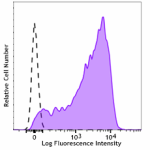
ConA/IL-2 stimulated (3 days) C57BL/6 splenocytes were stain... -
Brilliant Violet 421™ anti-mouse CD25
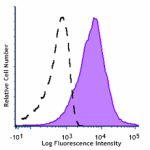
ConA/ IL-2 Stimulated (3 days) C57BL/6 splenocytes were stai... -
Ultra-LEAF™ Purified anti-mouse CD25

Con A-activated (3days) C57BL/6 mouse splenocytes stained wi...
 Login / Register
Login / Register 










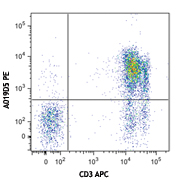
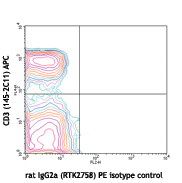



Follow Us